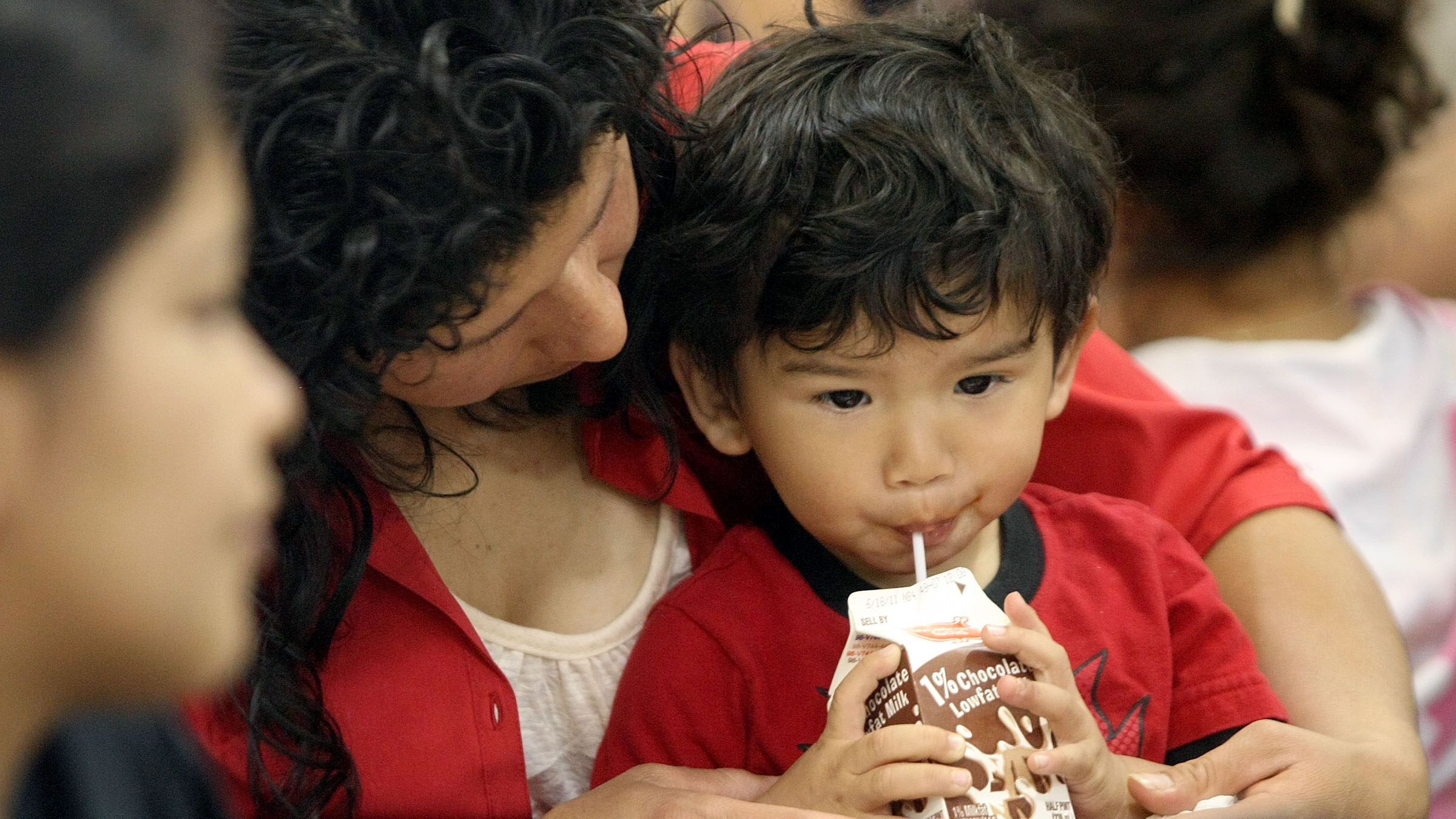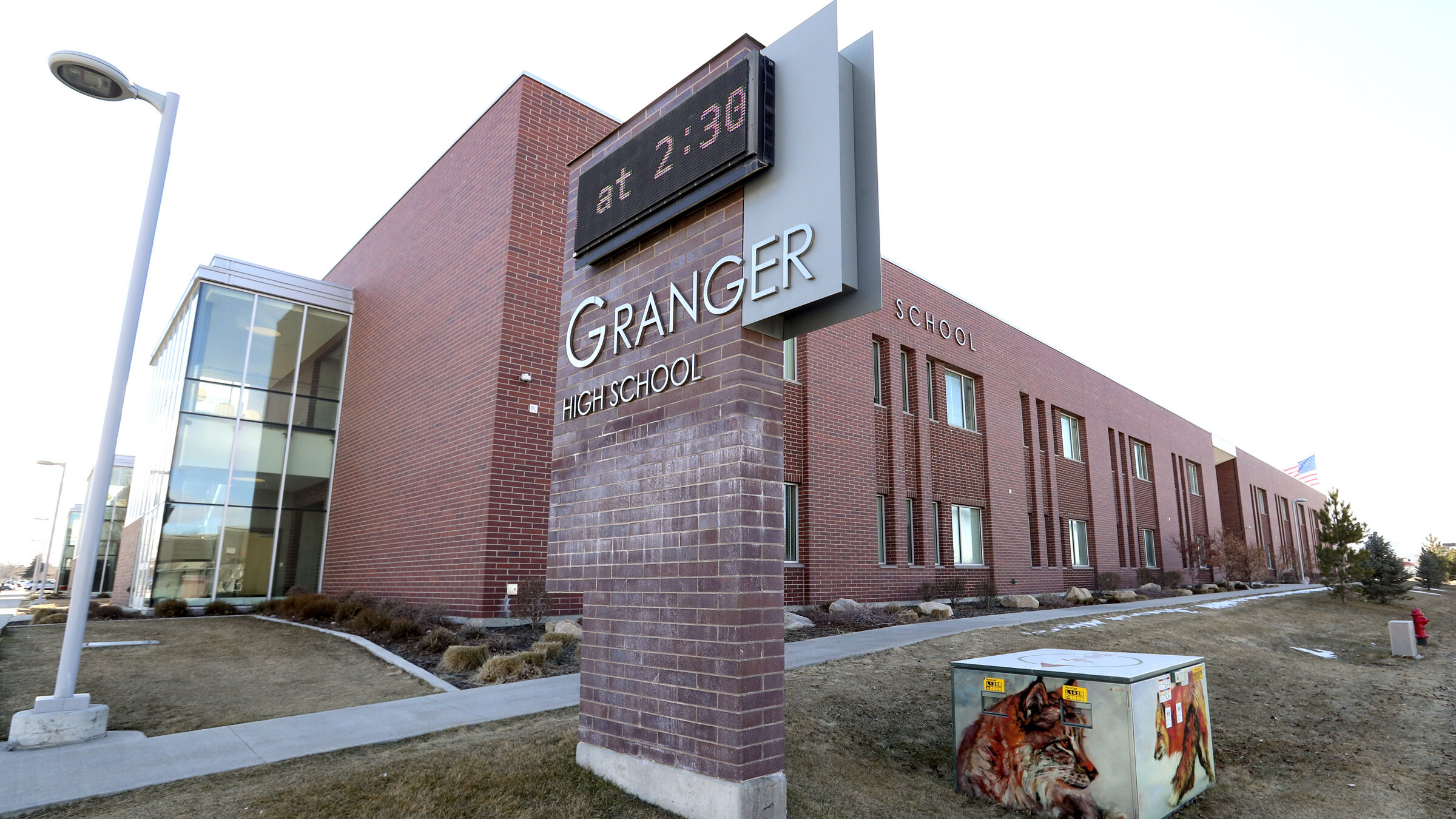Is chocolate milk in schools on the chopping block?
May 22, 2023, 12:00 PM

Elia Carranza helps her son Jose drink chocolate milk at the summer lunch program at Odyssey Elementary School in Ogden on Friday, Jun. 10, 2011. (Kristin Murphy/Deseret News)
(Kristin Murphy/Deseret News)
SALT LAKE COUNTY, Utah — The U.S. Department of Agriculture is weighing two priorities right now in trying to decide whether to limit offering chocolate milk in schools for breakfasts and lunches.
On the one hand, childhood obesity has tripled in the last three decades. One out of five children in America is obese.
In Utah, from 1994 to 2010, the number of obese third-grade boys increased from 6% to 11.8%. The number of obese third-grade girls increased by 40% at the same time. Childhood obesity seems to have leveled off since 2010 but remains high — 12.1% of third-grade boys and 8.3% of third-grade girls are obese.
For teenagers, Utah is not as high as the national average for obesity. In 2019, 15.5% of high school students were obese. In Utah, that looks more like 9.7%.
But they’ll drink less milk
As the USDA ponders the chocolate milk question, it’ll consider these obesity statistics. It’ll also consider the well-researched argument that if you remove chocolate milk from school cafeterias, children will drink less milk overall. And milk is a good source of protein and essential nutrients.
“In the studies that have been done, whenever they take flavored milk off the menu, milk consumption, in general, decreases greatly,” said Sebasthian Varas, the nutrition services director for the Canyons School District. “Milk has many nutrients that students can benefit from.”
Some proponents of taking chocolate milk off the menu argue that, while overall milk consumption will go down initially, it will come back up.
“In my experience, whenever they try to regulate what we do in school meals we do see a decrease in participation,” said Varas. “And yes, sometimes after many years, it starts to come back up, but not to the point that it was originally.”
Varas makes an important point about the need for change in children’s diets everywhere, not just in school.
“Unless we’re willing to restrict it everywhere, we’re not going to see real change.”
What is the USDA considering about chocolate milk in schools?
There are two choices before the USDA. One would restrict chocolate milk to high school only. The second option would continue to allow chocolate milk for kindergarteners through seniors in high school.
In both cases, the amount of sugar added to the milk is limited.
“The added sugars in chocolate milk for schools is much less than what we would see in chocolate milk in stores,” Varas explained.
That is just part of the reason why Varas comes down on the side of keeping chocolate milk in school.
“The benefits outweigh the negatives,” he said. “I think it would be wise to keep it on the menu.”
The comment period on the proposed change has now closed.
“Comments are going to have an effect,” Vargas explained. “The last time I checked there were 70,000 comments. It could be more.”
Varas and all interested parties are awaiting the decision from the USDA about chocolate milk in schools — and everyone will have to comply.
Related stories













